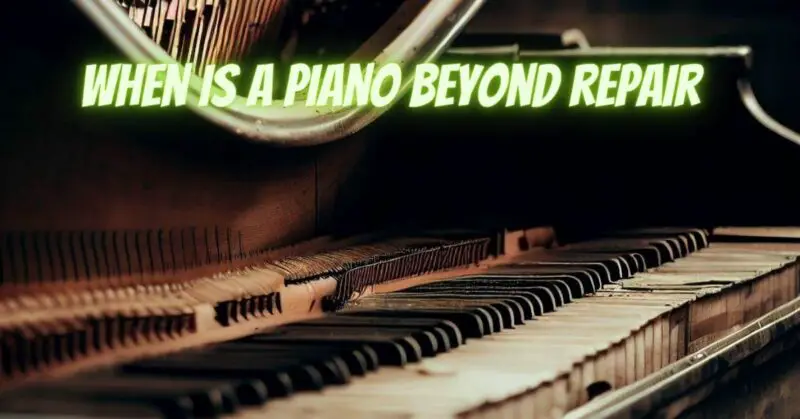Pianos, known for their longevity and musical prowess, can bring joy and inspiration for generations. However, like any mechanical object, there comes a point when a piano may be deemed beyond repair. In this article, we will explore the factors that determine when a piano reaches the end of its lifespan, and when it is no longer feasible to invest in repairs.
- Extensive Structural Damage: Pianos with severe structural damage may be considered beyond repair. This includes cases where the soundboard, bridges, or pinblock are extensively cracked, warped, or compromised. Such damage can greatly affect the piano’s ability to hold tune, produce quality sound, or even maintain stability. When the core elements of the piano are irreparably damaged, it may be difficult or impractical to restore them to their original state.
- Cost of Repairs: The cost of repairs is a significant consideration when assessing whether a piano is beyond repair. As a piano ages, it may require increasingly extensive repairs and restoration work to address wear, damage, and mechanical issues. At a certain point, the cumulative cost of repairs may exceed the value of the piano itself. If the cost to restore the piano surpasses its market or sentimental value, it may be more practical to invest in a new or used instrument instead.
- Unavailability of Parts: Older or rare pianos may face challenges in finding compatible replacement parts. If vital components are no longer manufactured or readily available, repairing the piano becomes increasingly difficult and costly. In such cases, it may be impractical or even impossible to bring the piano back to its original condition.
- Limited Sound Quality: As a piano ages, the quality of sound it produces may deteriorate significantly. Over time, the strings lose their elasticity, hammers become worn, and the overall tonal clarity and resonance diminish. If efforts to restore the piano’s sound fail to yield satisfactory results, it may be an indication that the instrument has reached the end of its lifespan.
- Lack of Historical or Sentimental Value: Pianos with little historical or sentimental value may be more easily considered beyond repair. If the piano does not hold personal significance or possess unique historical significance, it may not be worth the investment of time, effort, and resources to attempt repairs.
Conclusion:
Determining when a piano is beyond repair involves considering factors such as extensive structural damage, the cost of repairs, unavailability of parts, limited sound quality, and the absence of historical or sentimental value. It is essential to weigh the practicality and feasibility of investing in repairs against the overall value and future potential of the instrument. In some cases, saying goodbye to a piano that has reached the end of its lifespan may lead to new musical possibilities and the opportunity to explore the joys of a fresh instrument.


